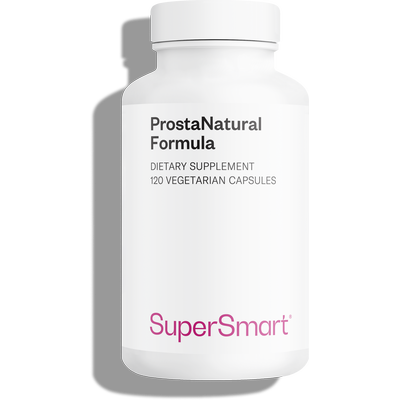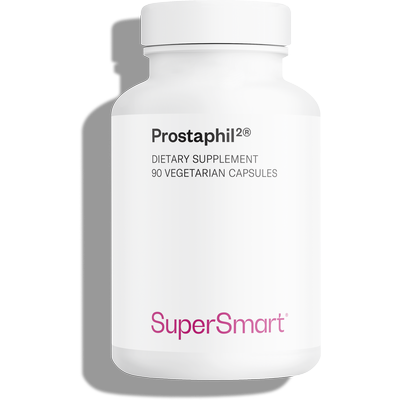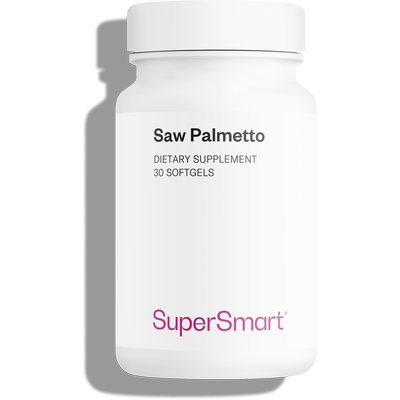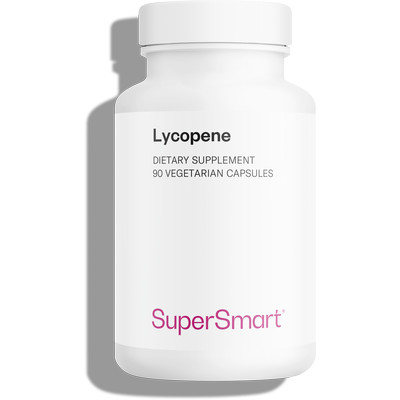31-03-2018
Prostate: Oh, if only men knew...
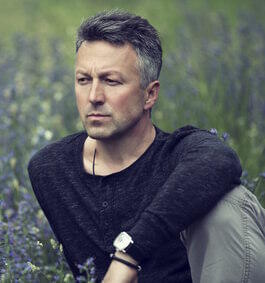 While women know that they will have to go through the menopause sooner or later, men do not know what is in store for them. They do not know that they will definitely be victims of a slow and progressive swelling of their prostate. They do not know that, if nothing is done, they will have to tell their doctor that they are becoming “impotent”, that they are losing their masculinity, and that urinary disorders are increasingly blighting their lives. It is therefore high time that men were informed and became proactive in dealing with this “disease”, which affects a very private aspect of their health.
While women know that they will have to go through the menopause sooner or later, men do not know what is in store for them. They do not know that they will definitely be victims of a slow and progressive swelling of their prostate. They do not know that, if nothing is done, they will have to tell their doctor that they are becoming “impotent”, that they are losing their masculinity, and that urinary disorders are increasingly blighting their lives. It is therefore high time that men were informed and became proactive in dealing with this “disease”, which affects a very private aspect of their health.
The inexorable aging of the prostate
The prostate gland is the centre of the male reproductive system both anatomically and functionally. Made up of 20% muscle tissue and 30% cavities, the prostate plays a key role in the creation of semen, and is the centre of the hormonal system.Its aging is the result of genetic and environmental factors to which the body is subject. This aging takes quite an unusual twist: the more years pass, the more the prostate grows. This enlargement is what medical literature calls benign prostatic hyperplasia, formerly known as prostate adenoma. It is considered a benign disease and raises the question of normality: at what point does a set of symptoms become an illness rather than a normal situation related to the process of aging? After all, the statistics are very clear4:
-
- At 40, you have about a 20% chance of being affected.
- At 60, this percentage increases to 70%.
- At 90, researchers agree that all men are affected by the “pathology”.
The uncomfortable symptoms of benign prostatic hypertrophy
The pathophysiology of benign prostatic hyperplasia is not yet well known, but we know it causes a number of uncomfortable symptoms6:-
- An unusually high frequency of urination, especially at night.
- Urinary incontinence due to urge incontinence (sudden urgent need to pass urine).
- Difficulty in starting to urinate.
- Weak urine stream.
- A urinary stream that stops and starts (straining while urinating).
- Dribbling at the end of urination.
- A sense that you cannot completely empty your bladder.
-
• A decrease in muscle strength and muscle mass (the estimated loss is 40% between the ages of 20 and 80)2.
• A decrease in pubic and armpit hair.
• Increased sweating and hot flushes.
• A reduction in the size of the testicles.
• Impairment in all phases of sexual intercourse3: - Obtaining an erection takes longer and requires greater stimulus.
- Reduced secretions that precede ejaculation (so-called pre-ejaculate).
- Shorter orgasms.
- The ejaculation of sperm is less voluminous and less forceful.
- The penis returns to normal size more quickly and the refractory period – the period following ejaculation during which an orgasm is impossible – is longer.
Alternative treatments that are not talked about
Ten years ago, there were essentially only two official treatments: monitoring and surgical treatment. Specifically, the usual procedure was to wait until the symptoms became unbearable before opting for surgical intervention, which was effective but burdened with side effects. Two drug therapies have now emerged. They reduce symptoms linked to benign prostatic hyperplasia... but cause others! Side effects include retrograde ejaculation (into the bladder), loss of virility, and decreased semen volume.Herbal preparations are obviously the oldest form of “medication”, but their use remains controversial. Despite the publication of numerous articles that are recognised internationally, herbal treatments are not always included in the therapeutic arsenal offered by doctors. Who knows why?
The informed reader, however, knows that these herbal preparations are incredibly effective and have few side effects. Unfortunately, this type of reader is rare. The vast majority of men are content to listen passively to the media and to the advice of their family doctor. Protecting their independence and masculinity is not at all one of their priorities... until strange symptoms occur; the same symptoms we listed earlier. In the time it takes to acknowledge that there really is a problem and to decide finally to tell the doctor everything, the prostate will have grown even bigger and the symptoms will have become worse.
The doctor will examine you, and confirm that you have all the signs of benign prostatic hyperplasia. After some further examinations, which include the infamous rectal examination, he will know if you should be treated medically or surgically, or if you should wait until your symptoms worsen before they can do something for you. Some doctors, rare free thinkers in a medical profession that is turned in on itself, will tell you about a range of natural products. However, for the vast majority of people who will not have the benefit of receiving this advice, we feel we have a duty to tell you about them, with some scientific studies to support our case. Here is a selection of the top five herbal remedies for counteracting prostate enlargement and reducing the symptoms related to this aspect of aging.
-
- Saw palmetto berries. Dozens of studies have shown that saw palmetto significantly reduces the symptoms of benign prostatic hyperplasia. The berries are as effective as a number of drugs, but devoid of their side effects (and there are many!), and are therefore indispensable8-14.
- Pygeum. Pygeum, which is also known as African plum, is also indicated for relieving symptoms related to benign prostatic hyperplasia. Since the 1970s, the scientific community has been awash with studies confirming this finding15.
- Beta-sitosterol. This type of phytosterol serves primarily to improve urine flow, thereby providing some relief16.
- Nettle root. Many studies have shown that nettle root, when taken as a standardised extract, relieves urinary problems linked to benign prostatic hyperplasia17-20.
- Ensure that you keep physically active in a way that is in keeping with your condition. Physical inactivity contributes undeniably to benign prostatic hypertrophy21,22.
- Adopt a responsible diet. As you already know, diet plays a key role in the aging of the body and this also applies to the prostate. Eat an abundance of antioxidant-rich foods (fruits, vegetables, nuts etc.) that are free of pesticides, and avoid excessive animal protein, sugar and saturated fats, which are known to accelerate aging.
- Take the time to empty your bladder completely every time you pass urine and opt for a sitting position if this does not make you feel uncomfortable. Establish a routine by giving yourself times in the day when you pass urine, for example at more or less fixed times (after waking up, after meals, etc.) or every four hours.
- Do not reduce your daily intake of water. However, you can spread your intake better by drinking less in the evening if you already have symptoms. Moderate your consumption of alcohol, which reduces the urge to pass urine, and coffee, which tends to inflate the prostate.
“You age as you have lived”
Prostate problems are particularly difficult for men over the age of 50. Most of these men regret not having taken the time to take care of this very discreet organ. When asked, they all say they thought that prostate problems affected only part of the male population, the unlucky few. If only they had known... And now that you know, are you going to look after your prostate?Références
1. Harman S.M., Metter E.J., Tobin J.D., Pearson J., Blackman M.R.: Longitudinal effects of aging on serum total and free testosterone levels in healthy men. Baltimore Longitudinal Study of Aging. J Clin Endocrinol Metab, 2001, 86, 724-731
2. Fleg J.L., Lakatta E.G.: Role of muscle loss in the age-associated reduction in VO2 max. J Appl Physiol, 1988, 65, 1147-1151.
3. Master W. H., Johnson V.E.: Human sexual response. Boston: Little Brown, 1976.
4. Hermann M, Untergasser G, Rumpold H, Berger P. Aging of the male reproductive system. Exp Gerontol 2000;35:1267-79.
5. Ho CK, Habib FK. Estrogen and androgen signaling in the pathogenesis of BPH. Nat Rev Urol 2011;8:29-41.
6. Abrams P, Chapple C, Khoury S, Roehrborn C, de la Rosette J, International Scientific C. Evaluation and treatment of lower urinary tract symptoms in older men. J Urol 2009;181:1779-87.
7. Bastien L, Fourcade RO, Makhoul B, Meria P, Desgrandchamps F. Hyperplasie bénigne de la prostate. EMC – Urologie 2011 : 1-13 [Article 18-550-A-10]
8. Wilt TJ, Ishani A, et al. Saw palmetto extracts for treatment of benign prostatic hyperplasia: a systematic review.JAMA 1998 Nov 11;280(18):1604-9.
9. Boyle P, Robertson C, et al. Meta-analysis of clinical trials of permixon in the treatment of symptomatic benign prostatic hyperplasia.Urology 2000 Apr;55(4):533-9.
10. Gordon AE, Shaughnessy AF. Saw palmetto for prostate disorders. Am Fam Physician. 2003 Mar 15;67(6):1281-3. Review. Texte intégral : www.aafp.org
11. Boyle P, Robertson C, et al. Updated meta-analysis of clinical trials of Serenoa repens extract in the treatment of symptomatic benign prostatic hyperplasia. BJU Int. 2004 Apr;93(6):751-6.
12. Gerber GS, Fitzpatrick JM. The role of a lipido-sterolic extract of Serenoa repens in the management of lower urinary tract symptoms associated with benign prostatic hyperplasia. BJU Int. 2004 Aug;94(3):338-44. Review.
13. Buck AC. Is there a scientific basis for the therapeutic effects of serenoa repens in benign prostatic hyperplasia? Mechanisms of action. J Urol. 2004 Nov;172(5 Pt 1):1792-9. Review.
14. Fong YK, Milani S, Djavan B. Role of phytotherapy in men with lower urinary tract symptoms. Curr Opin Urol. 2005 Jan;15(1):45-8. Review.
15. Wilt T, Ishani A, et al. Pygeum africanum for benign prostatic hyperplasia. Cochrane Database Syst Rev 2002;(1):CD001044.
16. Wilt T, Ishani A, et al. Beta-sitosterols for benign prostatic hyperplasia. Cochrane Database Syst Rev. 2000;(2):CD001043. Review.
17. Metzker H, Kieser M, Hölscher U. Wirksamkeit eines Sabal-Urtica-kombinationspraparates bei der behandlung der benignen prostatahyperplasie (BPH). Urologe 1996;36(4):292-300.
18. Lopatkin N, Sivkov A, et al. Long-term efficacy and safety of a combination of sabal and urtica extract for lower urinary tract symptoms--a placebo-controlled, double-blind, multicenter trial. World J Urol. 2005 Jun;23(2):139-46.
19. Sokeland J, Albrecht J. Combination of Sabal and Urtica extract vs. finasteride in benign prostatic hyperplasia (Aiken stages I to II). Comparison of therapeutic effectiveness in a one year double-blind study]Urologe A. 1997 Jul;36(4):327-33. German.
20. Efficacy and safety of a combination of sabal and urtica extract in lower urinary tract symptoms. A randomized, double-blind study versus tamsulosin. Engelmann U, Walther C, et al. Arzneimittelforschung. 2006;56(3):222-9.
21. Parsons JK. Modifiable risk factors for benign prostatic hyperplasia and lower urinary tract symptoms: new approaches to old problems. J Urol. 2007 Aug;178(2):395-401. Epub 2007 Jun 11. Review.
22. Lagiou A, Samoli E, et al. Occupational physical activity in relation with prostate cancer and benign prostatic hyperplasia. Eur J Cancer Prev. 2008 Aug;17(4):336-9.
Order the nutrients mentioned in this article
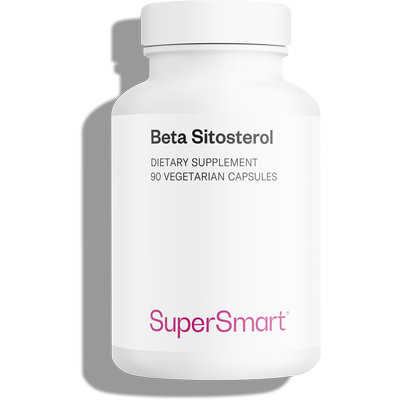
An effective alternative for treating benign prostatic hyperplasia (enlarged prostate)
www.supersmart.com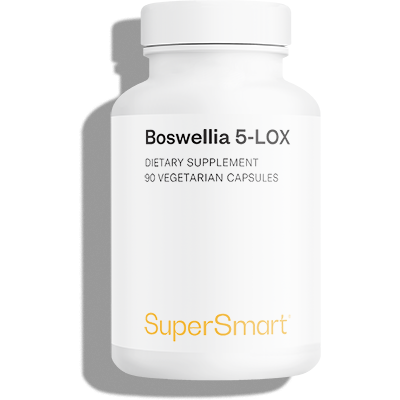
Dietary supplement containing 5-Loxin®, the most bioavailable and richest patented extract of Boswellia serrata for joint, gut and respiratory health, etc.
www.supersmart.com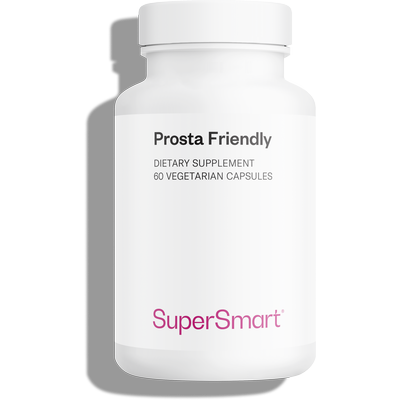
Optimised and patented cranberry extract for the relief of prostate and urinary symptoms.
www.supersmart.com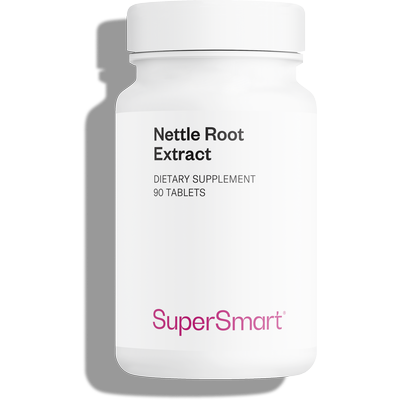
Recommended by the German Commission E for relief of urinary problems associated with Benign Prostatic Hyperplasia (BPH)
www.supersmart.comFurther reading
01-11-2017
Extract of nettle root (Urtica dioica) is widely used in Europe to treat prostate enlargement. More than 20 clinical studies have shown that either on...
Read more22-08-2018
Among the dietary supplements recognised as beneficial for benign prostatic hyperplasia, there are certain plant extracts and nutrients which extensive research shows to be the...
Read more08-03-2011
A Swedish study examined the diets of 525 men under the age of 80 with a diagnosis of prostate cancer made between January 1989 and...
Read more© 1997-2025 Fondation pour le Libre Choix
All rights reserved
All rights reserved
Free
Thank you for visiting our site. Before you go
REGISTER WITHClub SuperSmart
And take advantage
of exclusive benefits:
of exclusive benefits:
- Free: our weekly science-based newsletter "Nutranews"
- Special offers for club members only



